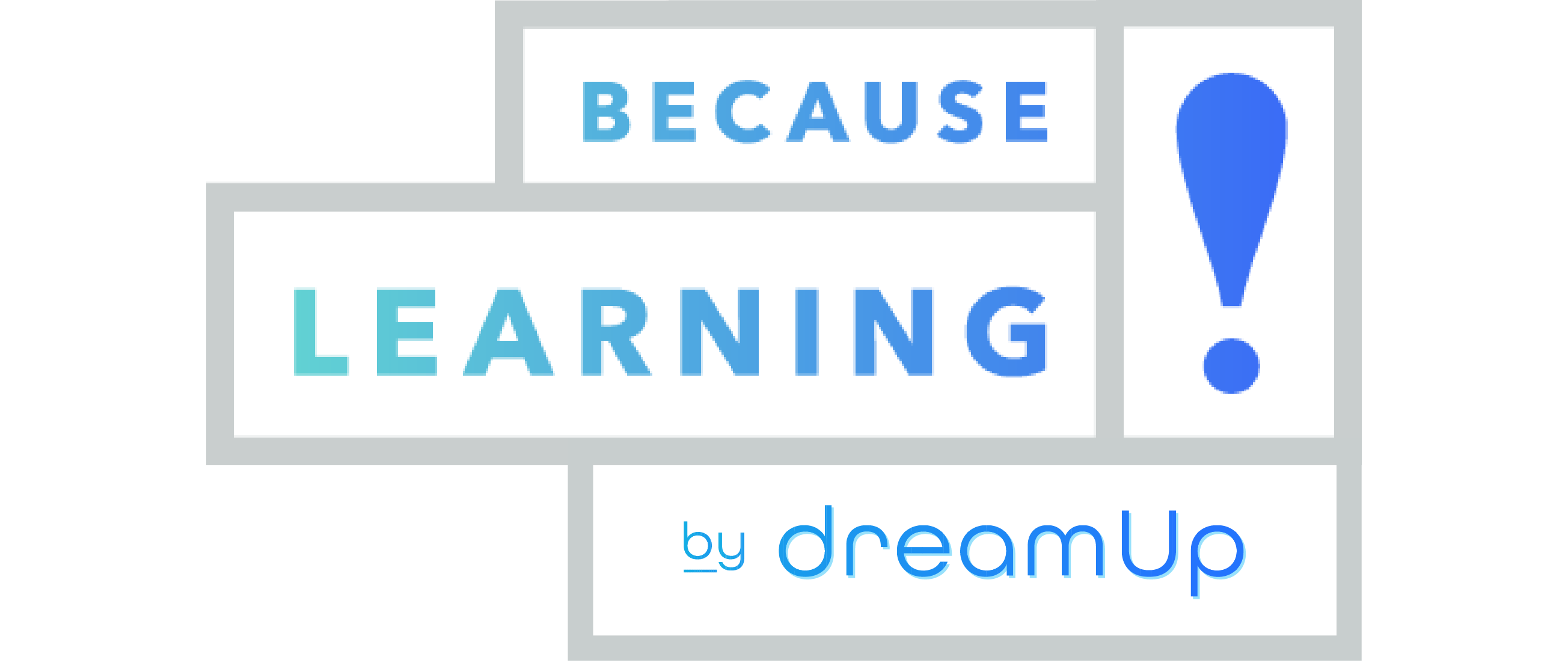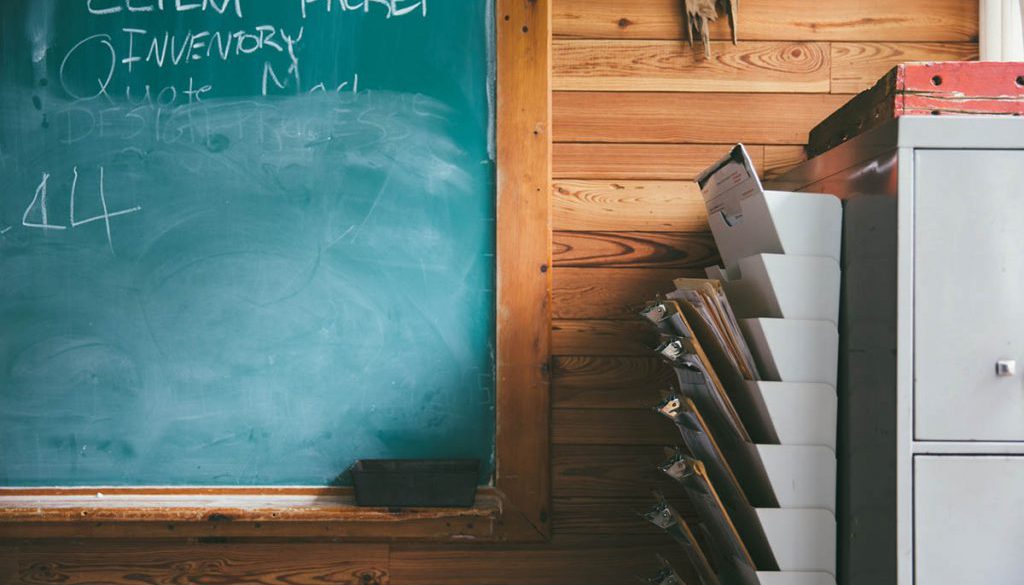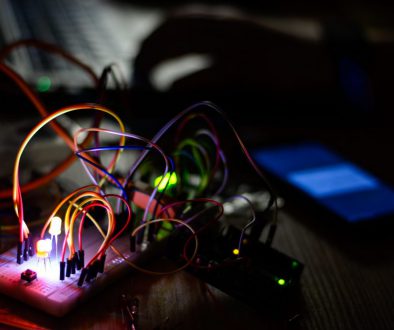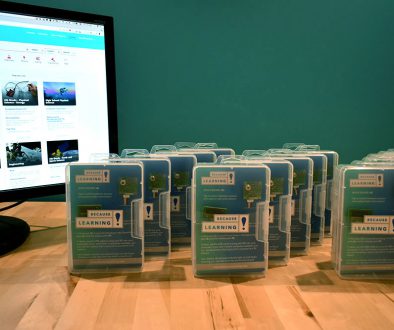Are Today’s Students in a Creativity Crisis?
Is there a creative crisis for today’s students?
Some people think so. And according to some startling research, creativity among students has been in rapid decline since the 1990s.
Dr. KH Jim is a professor of Creativity and Innovation at the college of William & Mary. In 2011, she published an article in the Creativity Research Journal examining the decline in measurable creative thinking in children.
Based on the data, measurable creativity in children had declined steadily since the early 1990s.
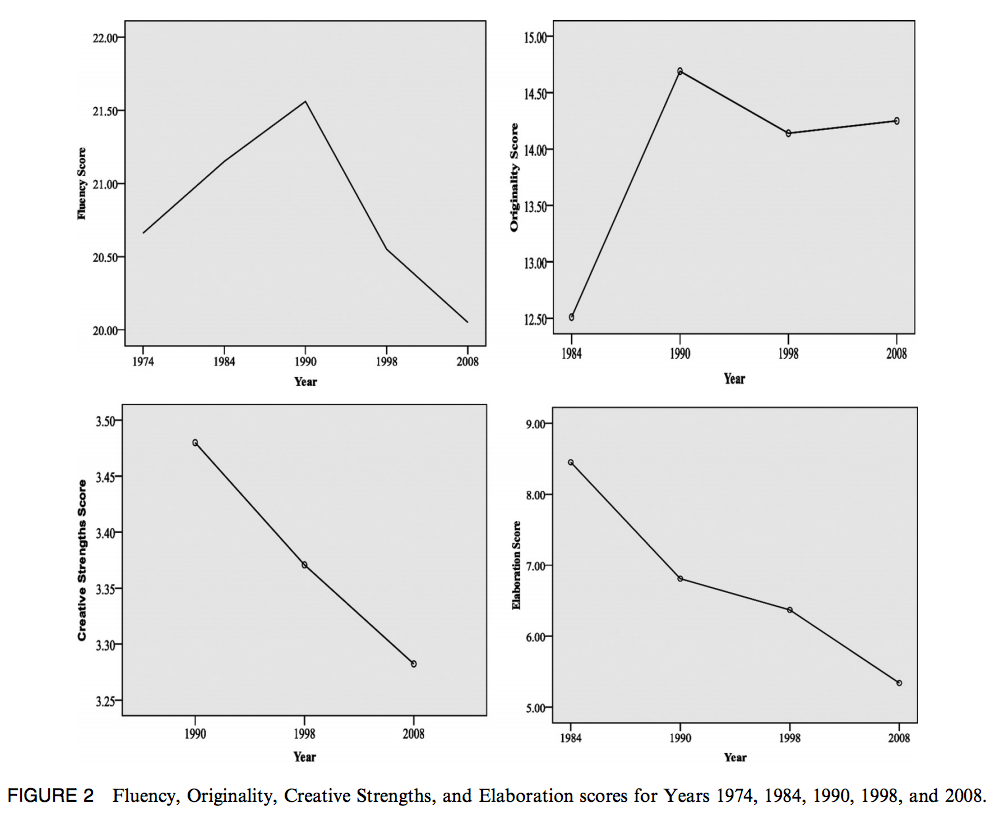
For some educators, Dr. Kim’s research isn’t surprising. Children seem to struggle more with developing creative solutions to their problems.
Is Standardized Testing to Blame?
Over at Idea to Value, Dr. Kim writes that high-stakes testing has stilted children’s imaginations:
Prior to the 1990s, schools provided children with the freedom to think alone and differently. However, since the 1990s:
Losing imagination and deep thought. Test-centric education has reduced children’s playtime, which stifles imagination. With pressure to cover large amounts of tested material, teachers overfeed students with information, leaving students little time to think or explore concepts in depth.
Fostering conformity. American education has increasingly fostered conformity, clipping eagles’ wings of individuality (All schools preparing students for the same tests and all students taking the same tests). It has stifled uniqueness and originality in both educators and students. Wing-clipped eagles cannot do what they were born to do – fly; individuality-clipped children cannot do what they were born to do – fulfill their creative potential.
Fostering hierarchy. Students’ low scores are often due to structural inequalities, which start in early childhood (e.g., the number of words exposed to by age 3), affecting their later academic achievement. Yet, high-stakes testing has determined the deservingness and un-deservingness of passers or failers. The claim of “meritocracy” has disguised the structural inequalities by conditioning disadvantaged students to blame themselves for their lack of effort.
Our focus on standardized testing, in other words, is restricting how students are allowed to think. “High-stakes testing has made millions of young men focus on preparing for tests, instead of challenging the social hierarchy,” writes Dr. Kim. “It has resulted in exam hell, the excessive rote memorization and private tutoring, starting in early childhood, to achieve high scores among students.”
Not only do standardized tests limit creativity, Dr. Kim argues, but it reinforces existing barriers for students from low-income homes:
Today, high-stakes testing costs American taxpayers tens of billions of dollars each year, but the real cost is much higher.
Highly-selective university and graduate school admission procedures rely on high-stakes tests such as the ACT and the SAT. Testing companies and test-preparation companies have reaped enormous financial benefits and lobby Congress heavily for more testing. However, because students’ scores are highly correlated with both students’ family income and spending on test preparations, high-stakes testing has solidified structural inequalities and socioeconomic barriers for low-income families.
Creativity and critical problem solving are going to be the top skills the rising generation needs. But according to Dr. Kim’s research (and our own experience), many students are being taught not how to think creativity, but how to conform fully.
If the creativity crisis continues, how will the rising generation – our students and children – meet the demands of their times?
Solving the Creative Crisis
While it would be nice to say, “Standardized testing harms creativity, so let’s just not do it,” the realities of our educational system make that nigh-impossible. Standardized testing and mandatory programs have left many educators focused on meeting measurable standards. The focus in the classroom becomes on preparing students to take tests. We simply can’t ignore district, state, and national standards while expecting to keep our jobs for long.
So what can we, as educators, do to find a balance between test prep and fostering genuine discovery and creativity in our students?
And how do we bring equal opportunities to develop meaningful learning for all our students – not just the privileged ones?
It’s not an easy question to answer. But some schools have found success implementing learning aids that help foster a creative spirit while still teaching critical standards.
For example, many educators – like those in Santa Rosa, Florida – use our Sensor Kits to drive classroom engagement. Not only do students feel more connected to their subject matter, they also make connections between what they learn in class and what they need to know for standardized tests. Watch this video to see how Because Learning’s Sensor Kits were used to teach STEM:
Here are some other tips we’ve seen work in our role as Learning Experts:
- Plan activities with multiple standards in mind. (We try to make this easy in our Lessons portal.)
- Provide some sort of memorable, hands-on component with creativity built in. This could mean time to explore to try different solutions before finding the right one.
- Encourage exploration and failure. By creating learning environments where failure is okay – something we don’t see on standardized tests – we encourage our students to try multiple paths until they find the learning style that’s right for them. Then they can apply that to more objective, standardized learning experiences.
We Have a Lot of work to Do – But We Can do it!
We know it’s not easy to balance standardized testing requirements with the creativity we want our students to have. Our own childhoods were often filled with wonder, excitement, and exploration. We feel excited about giving our students those same experiences.
If you’re not sure how you can make your classroom lessons more engaging and creative, check out our newly-updated Lessons portal. Every month, we add new lessons so you and your students can enjoy classroom fun.
